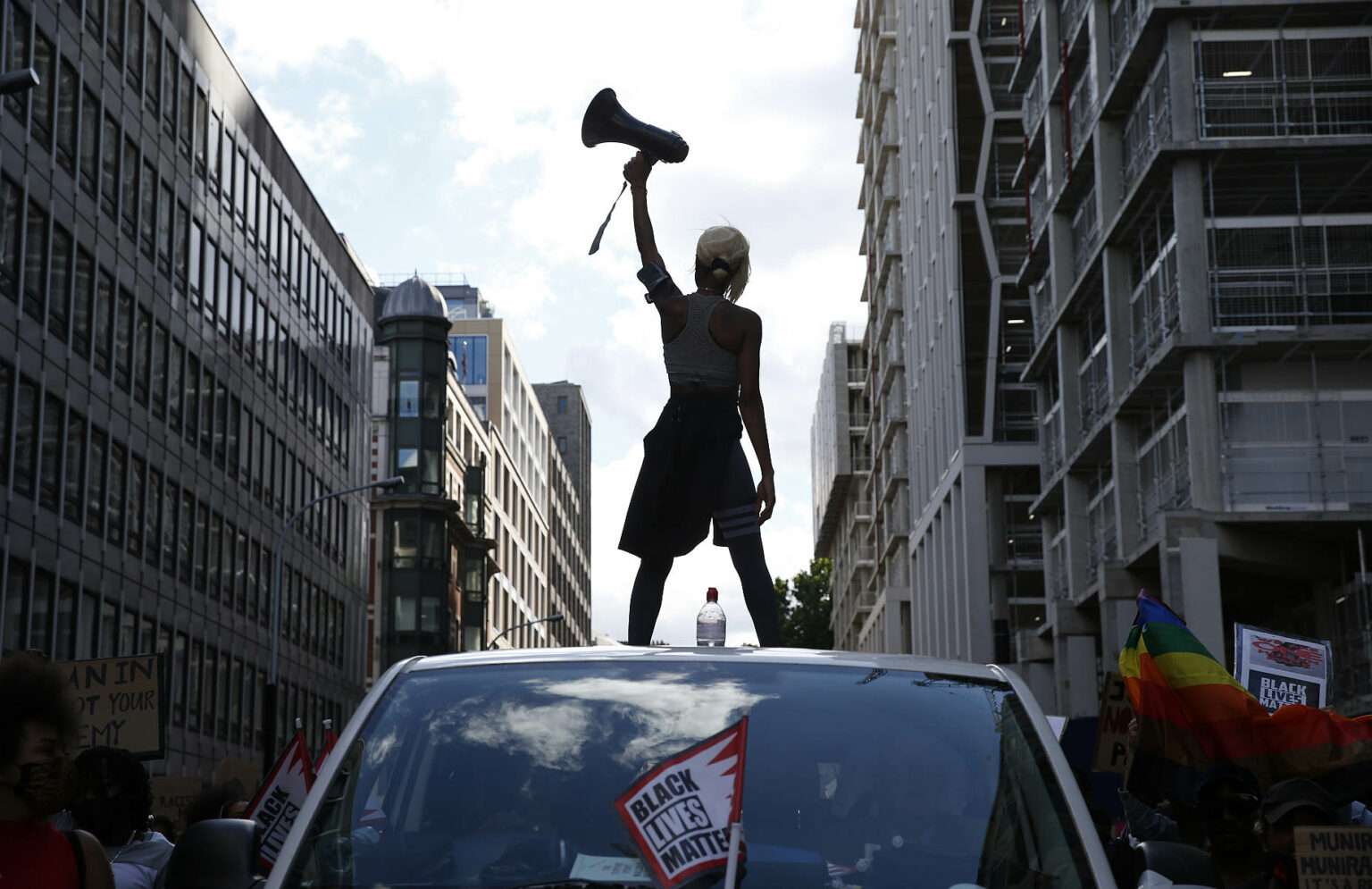
Long-read
A brief history of woke
How reactionary ideas about race, gender and class made a comeback in faux-progressive form.
The following is an edited extract from How Woke Won: The Elitist Movement That Threatens Democracy, Tolerance and Reason, the new book by Joanna Williams, published by spiked. Order your copy here.
The word ‘woke’ captures something in our political and cultural zeitgeist. It might be ubiquitous, but there’s little consensus about what woke actually means. Even those who agree with woke values in general can’t quite decide whether or not woke is a good thing to be. One day, being woke is so important that people are given instruction on ‘becoming woke in the wake of “Me Too”’ or are provided with ‘The woke black person’s guide to talking about oppression with family’. Teachers are offered advice on ‘keeping your classroom woke’ and the Guardian gives readers dating tips on how to find ‘Mr Woke’. Being woke is progressive and fun!
But when critics pick up on this self-descriptor of choice, everything changes. US congresswoman Alexandria Ocasio-Cortez complains: ‘“Woke” is a term pundits are now using as a derogatory euphemism for civil rights and justice.’ ‘Woke was kidnapped and has died’, mourns author Rebecca Solnit. ‘Woke’s youth was among young black people but its illness and decline came after it was kidnapped by old white conservatives’, she explains.
Even as the complaints roll in, woke holds progressives in its grip. Charlie Higson, author of the Young Bond novels, swoons over Bond star Daniel Craig for his portrayal of a spy who is less Lothario and more woke. Craig’s 007 is ‘tender, cries and gets into the shower in his tuxedo to comfort a woman’, gushes Higson. Australian children’s music group the Wiggles are praised for ‘going woke’ in their bid to ‘better represent today’s Australia’, across age, race and culture, ‘enabling children worldwide to see themselves reflected on the screen’. A top headteacher bemoans the fact that calling young people ‘woke’ is offensive and might sap their appetite for activism.
What all this boils down to is that those who are thoroughly imbued with woke ideas believe ‘woke’ is good if they say it, but bad if their critics say it. Those who are labelled woke deny being anything of the sort, but almost everyone can readily identify a set of woke concerns and values. And so despite few people claiming to be woke, woke values dominate our institutions. Here we will trace the ever-changing meanings of woke and consider why woke’s leading proponents reject the label others attach to them.
What is Woke?
To be ‘woke’ is to be awake; literally, not asleep. The Old English roots of ‘awake’ lie in both ‘arise’ and ‘revive’, and this has long prompted metaphorical usage. Spring awakens nature, passion can be awakened, and people become awake to new knowledge. Back in the early decades of the 20th century, this figurative meaning began to be applied to politics. Specifically, it came to mean politically awake and alert to racial discrimination and social injustice.
In 1923, a book which collected the aphorisms and ideas of Jamaican-born philosopher, black nationalist and political activist Marcus Garvey included the rallying cry ‘Wake up Ethiopia! Wake up Africa!’ as a ‘call to global black citizens to become more socially and politically conscious’, according to one article on the history of ‘wokeness’. This was taken up by black communities in the US.
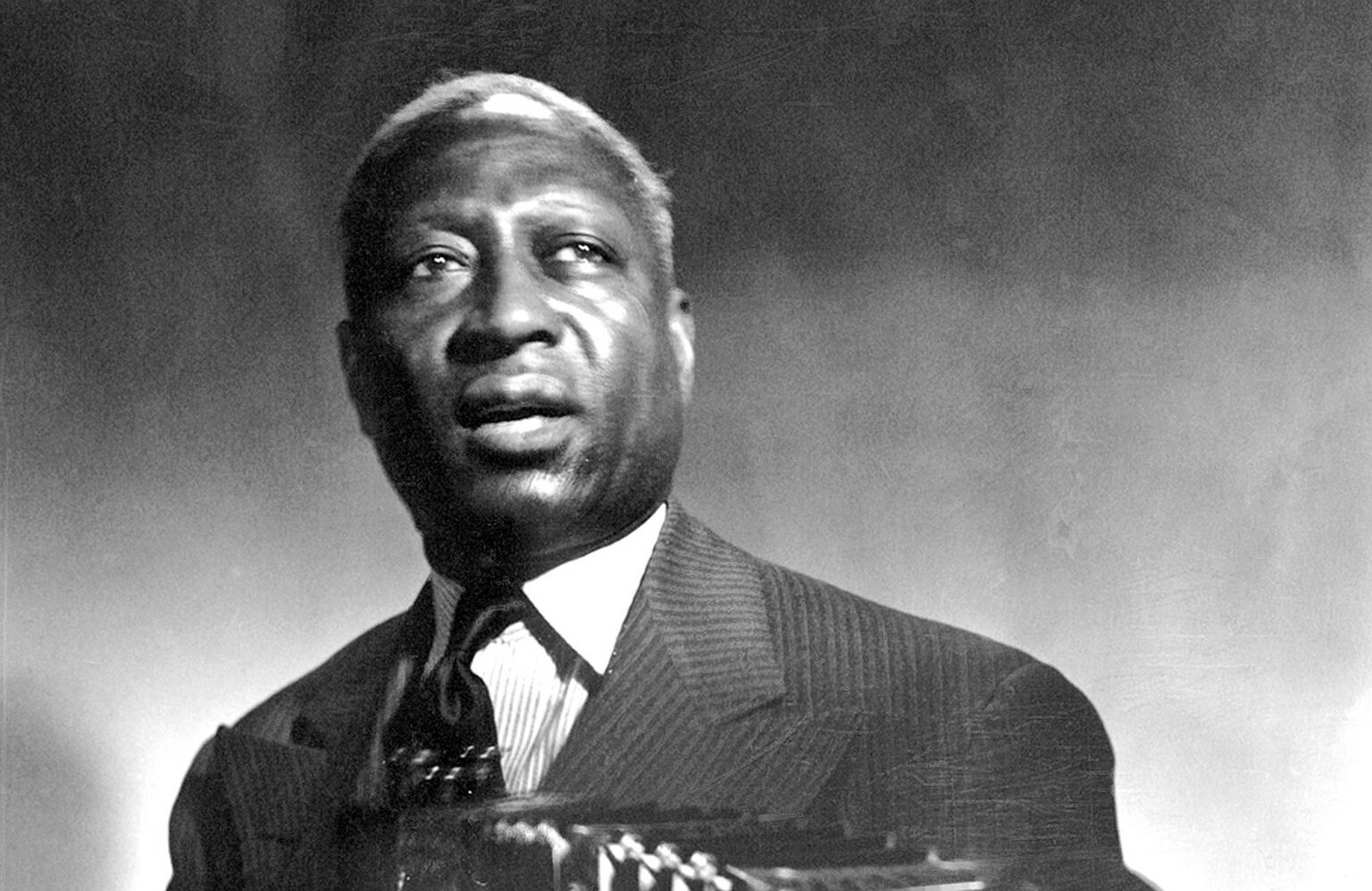
In 1938, the phrase ‘stay woke’ was used by blues musician Huddie Ledbetter, better known as Lead Belly, in a spoken afterword to the song ‘Scottsboro Boys’. This was a protest song describing an incident from 1931 in which nine black teenagers from Scottsboro, Arkansas were accused of raping two white women. Lead Belly says: ‘So I advise everybody, be a little careful when they go along through there – best stay woke, keep their eyes open.’ This spoke not just to the existence of racial injustice, but also to a more specific need among black people at that time: to stay alert to threats and dangers from white people in general and from the state in particular. ‘Stay woke’ reminded black people that they needed to be vigilant against the threat of racist violence.
By the mid-20th century in America, ‘woke’ was still used almost exclusively by members of the African American population, but two meanings ran in parallel: be vigilant for potential threats from powerful whites and also be ‘aware’ or ‘well informed’ about political injustices in general. Both meanings were used in black dialect and were brought to the attention of the wider American public with a 1962 New York Times article by African American novelist William Melvin Kelley. In ‘If you’re woke, you dig it’, Kelley described the appropriation of black slang by white beatniks. Decades later, ‘woke’ itself came to be appropriated by white hipsters, at the very same time that exposing and condemning the appropriation of black culture came to be a woke action.
Three years after Kelley’s article was published, Martin Luther King, addressing crowds at the end of the 1965 civil-rights march from Selma to Montgomery, recalled an older meaning of ‘woke’ when he described the origins of racial segregation as emerging from opposition to the Populist Party of the 1890s. According to King, the white elite sought to challenge nascent populism because ‘the leaders of this movement began awakening the poor white masses and the former negro slaves to the fact that they were being fleeced by the emerging Bourbon interests’. Garvey Lives!, a 1972 play by Barry Beckham, features a character who says he’ll ‘stay woke’ thanks to the work of Marcus Garvey: ‘I been sleeping all my life. And now that Mr Garvey done woke me up, I’m gon’ stay woke. And I’m gon’ help him wake up other black folk.’
Woke in the 21st century
Several decades passed before ‘woke’ exploded into popular usage. In 2005, singer Georgia Anne Muldrow wrote a song called ‘Master Teacher’ that featured the refrain ‘I’d stay woke’. It was written for an album called Black Fuzz, by Sa-Ra Creative Partners, although neither the song nor the album was ever actually released. However, Muldrow’s track was picked up by another singer, Erykah Badu, who released an updated version in 2008 on her album New Amerykah Part One (4th World War).
In 2014, protests broke out in Ferguson, Missouri following the police killing of Michael Brown. Activists rallied around the slogan Black Lives Matter. The phrase ‘stay woke’, popularised by Badu, quickly became associated with the Black Lives Matter movement through the sharing of the hashtag #StayWoke online. This was a call back to the 1930s warning to black people to stay alert to the threat of racist police brutality, but it rapidly expanded to encompass the broader sense of being aware of all forms of social injustice.
2016 was the year that being woke – and, importantly, letting people know that you are woke – became fashionable. Online magazines carried lists of the ‘young and woke’ featuring ‘celebrities who lead by example’. They profiled ‘15 Sexy Celebs Who Get Even Hotter Once You Realise How Woke They Are’ and gave us ‘The Ultimate Guide to Woke Celebrity Bros’. Praise was heaped upon public figures who made a display of being anti-racist, feminist, queer or gender nonconforming. Twitter CEO Jack Dorsey took to the stage at a major conference in June 2016 wearing a t-shirt emblazoned with ‘#StayWoke’. Back then, to be woke was cool and aspirational.
By the following year, ‘woke’ had become so mainstream that the Oxford English Dictionary listed it as one of its new words of note. The definition reads: ‘Originally: well-informed, up-to-date. Now chiefly: alert to racial or social discrimination and injustice.’ The online Urban Dictionary of street slang had defined ‘woke’ two years earlier as ‘being aware… knowing what’s going on in the community (related to racism and social injustice)’.
Anti-woke
As foreshadowed by Kelley back in 1962, the word ‘woke’ has emerged into mainstream white culture. This has led some to decry the fact that, ‘like anything created by black people’, the word has been ‘appropriated by the masses’. As Dorsey’s t-shirt demonstrated, by 2016 ‘woke’ had become popularised, commercialised and even memeified. Perhaps unsurprisingly, by 2018, as woke entered everyday speech, the association of woke with superficial displays of moral superiority had also become firmly entrenched in the public imagination.
In turn, this backlash against woke prompted its own response. First came denial. ‘Woke’ was hastily dropped by the very same celebrities and commentators who had rushed to identify with the word just months earlier. By 2018, Urban Dictionary had a new definition: ‘The act of being very pretentious about how much you care about a social issue.’ Some went so far as to suggest that woke had only ever been used by the right as an insult directed at all things progressive. Writing in the Guardian in 2019, Afua Hirsch claimed that anyone using the word is ‘likely to be a right-wing culture warrior angry at a phenomenon that lives mainly in their imagination’. Today’s woke activists like to call out ‘gaslighting’ – that is, lying to make people doubt their own sanity. But gaslighting is not, it seems, something they are averse to practising themselves. After denial came reinvention. Those who persisted in mocking woke were directed to the word’s more neutral definition of ‘awareness’ and accused of being insensitive to racist, sexist and transphobic discrimination. To add to the insult, another Guardian writer, Steve Rose, accused critics of woke of seeking ‘victim status’ for themselves, ‘rather than acknowledging that more deserving others hold that status’.
Attempts to reclaim the word ‘woke’ by so-called progressives have been largely unsuccessful and woke is today primarily used critically. As Evan Smith, also in the Guardian, writes: ‘Rarely a week passes without a right-wing commentator warning about the rise of “cancel culture” or decrying the “woke agenda”.’ But these critics-of-the-critics miss the point. Opposing woke does not automatically make people right-wing. Opposing woke does not mean promoting racism, sexism, homophobia or other forms of bigotry and discrimination. Those pushing back against the rise of woke today are most often echoing views that were, not that long ago, considered radically progressive. They are concerned about a divisive shift in left-wing politics that risks pitching groups against each other according to race, gender and sexuality. Many of woke’s critics are concerned about a growing hostility to the liberal principles of free speech, tolerance, civil rights and democracy. They are concerned about the inflationary rhetoric that brands those not completely on board with woke thinking ‘homophobes’, ‘transphobes’ or ‘fascists’. As comedian and author Andrew Doyle explains, ‘critics of “wokeness” are trying to resist bigotry rather than uphold it’.
But while the cultural elite has rejected the label of woke, the values associated with being woke are more influential than ever. They have moved from the fringes of political life to the mainstream and now influence the actions of public institutions, national governments and private businesses. In the process, the meaning of these values has morphed and stretched. Some, such as ‘diversity’, have always been vacuous concepts, while others, such as inclusion, have been so expanded beyond their original application as to be rendered hollow.
The values promoted by woke are today most associated with an emergent elite that is socially and geographically mobile, highly educated and social-media savvy. Woke may not be this elite’s self-descriptor of choice, but woke ideas underpin establishment decision-making and corporate mission statements. ‘Woke’ refers to the side in the culture war that denies it is waging a culture war, yet which repeatedly fires the opening salvos.
From radical to mainstream
The elastic definition of woke has allowed it to shift from aspirational to insulting and back again, while its key values have quietly gained ground. Woke campaigns often thrive by saying one thing but meaning another. No right-minded person doubts that black lives matter. However, many strenuously disagree with the specific political goals of Black Lives Matter (BLM), the political campaign group. BLM’s success hinges on the organisation and the sentiment of the slogan becoming blurred. Rhetorical slippage between the general and the particular is exploited. This has created a fair bit of confusion. When Boris Johnson was asked by an interviewer if he thought Joe Biden was ‘woke’, Johnson felt the need to say that ‘there’s nothing wrong with being woke’. This is despite the fact that, on other occasions, his Conservative government has presented itself as critical of woke values. When the penalty for challenging movements such as Black Lives Matter may be career-ending accusations of racism, it is understandable that people nod through the elisions.
The word ‘woke’ is similarly slippery. Activists may announce that being woke simply means being alert to social injustice. But, in practice, woke has come to mean far more than just awareness. It means adopting a particular outlook, but one that is also constantly changing. Author Shon Faye caveats The Transgender Issue with the acknowledgement that ‘my terminology may seem dated in a few years’ time’. It is easy to cast this obsession with language as simply performative or harking back to an earlier era of political correctness. But woke is much worse than that – it is fundamentally at odds with older principles of civil rights and human rights. The implementation of woke ideas almost always has authoritarian consequences.
In many respects, Black Lives Matter perfectly epitomises woke. It is not enough for people to be aware of racial injustice – ‘silence is violence’, comes the retort. Nor is it enough for people not to be racist – they must, in the words of Ibram X Kendi, be actively anti-racist. This means conforming to a quite specific set of views that fall under the rough heading of critical race theory. This means seeing people as racialised beings who passively enact deeply rooted unconscious biases. It means viewing society as systemically and irredeemably racist, an inevitable result of deeply entrenched white privilege, demonstrated through the microaggressions white people constantly inflict upon black folk. What’s more, it means expressing these sentiments using a specific vocabulary, familiar only to true anti-racists: ‘people of colour’, ‘Latinx’, ‘BIPOC’. One must police the language and behaviour of others, calling out not just those who are racist, but also those who hold the wrong form of opposition to racism.
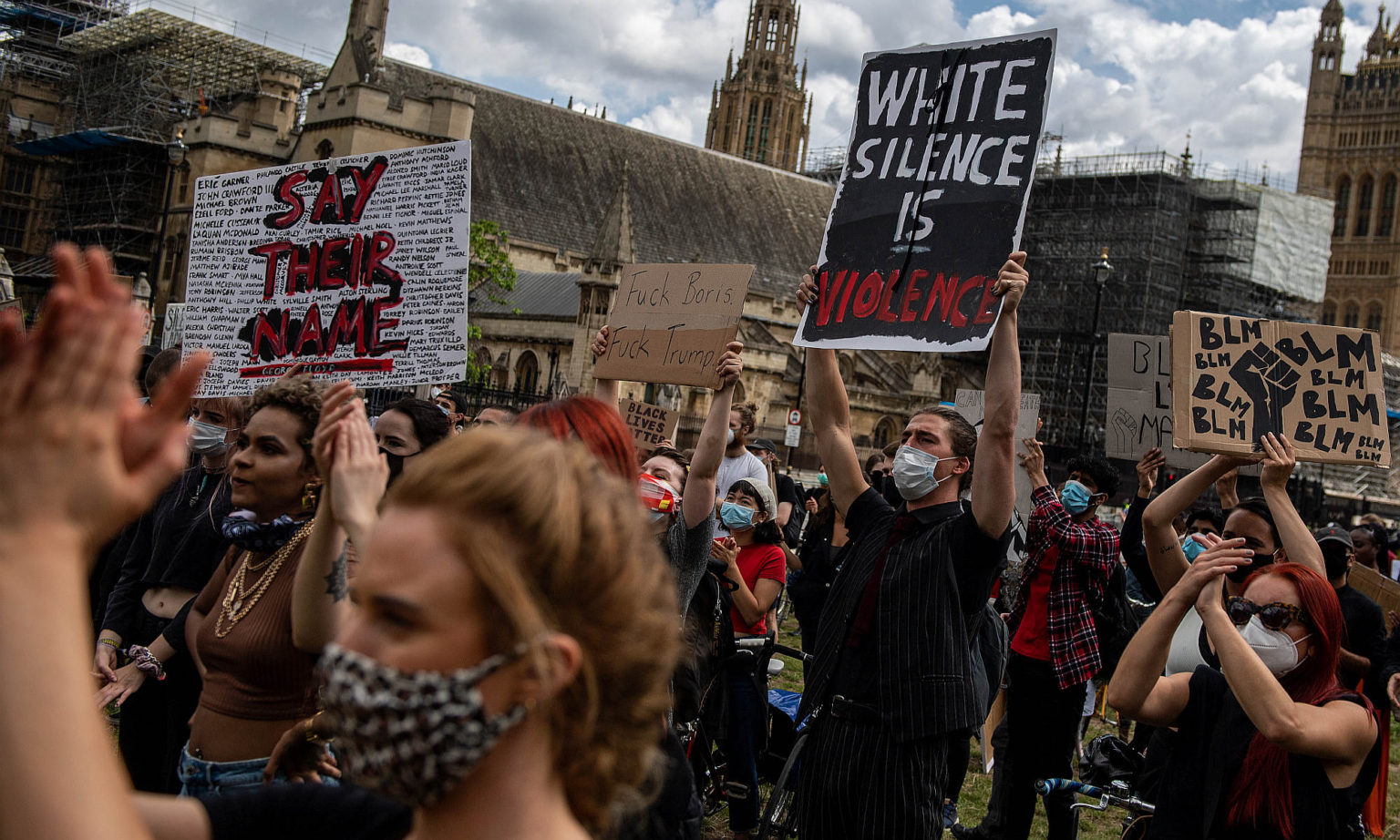
To be woke, then, is less about identifying with a label and more about holding a particular set of values and adopting a particular stance – one that appears radically egalitarian but often runs entirely counter to previous movements for equality. To be woke is to see gender as multiple and fluid and to employ a complex vocabulary that begins with transgender and cisgender and branches out into nonbinary, agender, pangender, genderqueer, demigirl and so on. Yet to be woke is also to believe that demonstrating masculine behaviour makes someone a man (whatever their sex), while to be a woman is to look and to act feminine.
Woke values aim to promote social justice through the foregrounding of identity politics. This entails categorising people according to immutable characteristics such as race or sex, before dividing and ranking them according to assumed hierarchies of oppression. A therapeutic ethos presents emotional safety and financial precarity as intrinsically linked; it assumes that people who are either traumatised or subjected to discrimination cannot compete as equals in the workplace. Shon Faye writes: ‘To be trans is an experience bound up with economic struggle.’ In this way, Faye and other woke activists redefine social class. There is a world of difference between someone with connections, wealth and education falling upon hard times and the structural, generational and geographical disadvantages that working-class people routinely encounter.
All too often, the sense of virtue that comes from claiming to act on behalf of the disadvantaged and oppressed legitimises a refusal to countenance dissent – and a ruthlessness at dealing with those seemingly in opposition to the woke mission. Those deemed ‘enemies’ are readily written off. Philosopher and gender theorist Judith Butler argues that ‘anti-gender movements are not just reactionary but fascist trends’. Left-wing commentator Owen Jones says that ‘the aftershocks of the 2008 financial crash had… many impacts. One was the global growth of the far right, who typically blamed Muslims, migrants, refugees and other oppressed and marginalised minorities for growing social trauma.’ Such hyperbole not only trivialises fascism and insults ordinary voters – it also legitimises an authoritarianism that belies the mantra #BeKind. As Professor Kathleen Stock discovered to her cost, when the backlash against her gender-critical views made her position at the University of Sussex untenable, censorship, cancelling, harassment, abuse and even death threats are all apparently justified if they are carried out in order to stem a perceived ‘fascist’ threat.
Social-media platforms have undoubtedly played a part in accelerating the spread and attraction of woke ideas. Left-wing academics and activists have long expressed concern that the algorithms employed by YouTube and Facebook direct people to content they are already predisposed to agree with, and may even direct users towards ever-more extreme content in a bid to keep them on a particular site. In the aftermath of Donald Trump’s 2016 presidential victory, there was also concern that Facebook and Twitter allowed people to create communities of the likeminded: social-media bubbles that confirmed participants’ views and allowed more extreme opinions to flourish unchecked. But if these criticisms hold true of right-wing voters, they are also true of left-wing activists. Woke ideas flourish when virtue can be displayed at the click of a mouse. Woke one-upmanship leads to ‘purity spirals’, defined as ‘vicious cycles of accusation and judgement’ that lead to individuals deemed ‘problematic’ being targeted. The impact of this on individuals can be devastating. But perhaps of more concern is the impact on debate: free speech is chilled and intellectual conformity is enforced when people fear saying what they truly think.
Twitter, in particular, has given birth to a lazy form of journalism that revolves around rehashing social-media commentary and packaging it up for public consumption in the form of articles. This practice means that the views of Twitter users are overrepresented in national debates and their ideas take on the appearance of a consensus. But Twitter users are not representative of the population. One academic study has suggested that ‘Twitter and Facebook users differ substantially from the general population on many politically relevant dimensions including vote choice, turnout, age, gender, education and region’. It adds that ‘Twitter users [are] a minority of every age group’.
Woke values now extend far into established social and cultural institutions. This has happened not because of the strength of woke ideas, but because institutions have long since abandoned their founding principles. Schools, universities, museums and the media are no longer driven by an imperative to impart knowledge, to pursue truth, to preserve the past or to cultivate beauty. These important values were problematised and rejected a long time ago. Woke ideas have, far more recently, provided those in charge of national institutions with a new sense of purpose.
The importance of language
Language plays an important role in demarcating the woke from the non-woke. Knowing to say ‘people of colour’ rather than ‘coloured people’, ‘transgender’ rather than ‘transsexual’, ‘Latinx’ rather than ‘Hispanic’, and ‘sex assigned at birth’ rather than simply ‘male’ or ‘female’, serves to differentiate people who are woke from those who are not. This acts much the same way that saying lavatory or toilet, napkin or serviette, sofa or settee, signified social class in decades past. A key role of schools and universities today is inducting students into this woke language and its associated ideas, either through immersion or through formal training, in the form of mandatory anti-racism workshops or consent classes. In turn, young graduates carry this outlook with them into the workplace. The more woke language and principles are adopted by a social and cultural elite, the more they are assumed to be mainstream, and the more those who use outdated terminology stand out.
The obsessive focus on language leaves advocates of woke politics open to the accusation that their project is superficial and performative, rather than concerned with bringing about material changes to the quality of people’s lives. For example, rather than campaigning for all parents to have access to free childcare for young children, woke activists focus on encouraging teachers to use gender-neutral language in nursery schools. It is easy to mock this as a bizarre attempt to bring political correctness to even the very youngest children at the expense of more important economic matters. But this misses the fundamentally corrosive impact of woke ideas. Attempts at imposing woke values upon children risk setting the generations at odds with each other as parents, and especially grandparents, may experience this as a direct attack upon their own way of life. In this way, woke educators – whether they realise it or not – end up challenging traditional family values in their bid to socialise children into what they assume to be a superior set of values. The woke project, then, is not a distraction from cost-of-living concerns, but another form of attack on the working class.
Woke politics
The woke outlook is fundamentally elitist. At its heart lies an assumption that some are too ignorant and others too vulnerable to be allowed to control their own lives and shape their nation. Woke reveals itself to be anti-democratic and censorious when policies aimed at curtailing debate are enacted, either by private social-media companies or national governments. When GB News – an alternative television-news station – launched in the UK in 2021, woke culture warriors immediately began a campaign to get advertisers to withdraw from the channel. They saw the prospect of anti-woke discussion as so dangerous that it had to be nipped in the bud.
This resort to censorship stems in part from insecurity. Woke ideas, in all their forms, are rejected by the bulk of the population. Whether it is falling viewing figures for woke awards ceremonies or the rejection of overtly woke political candidates in elections, time and again, when given the choice, the public reject woke. More and more people in politics are beginning to notice. Democratic political consultant James Carville has criticised the language used by leading Democrats in the US:
‘You ever get the sense that people in faculty lounges in fancy colleges use a different language than ordinary people? They come up with a word like “Latinx” that no one else uses. Or they use a phrase like “communities of colour”. I don’t know anyone who speaks like that. I don’t know anyone who lives in a “community of colour”. I know lots of white and black and brown people and they all live in… neighbourhoods.’
Carville makes an important point about woke language: it is convoluted, indecipherable and alienating. This reflects the woke assumption that people are either oppressors or oppressed, victims or perpetrators, and that liberating people from this predicament requires us to alter the very building blocks of language and thought.
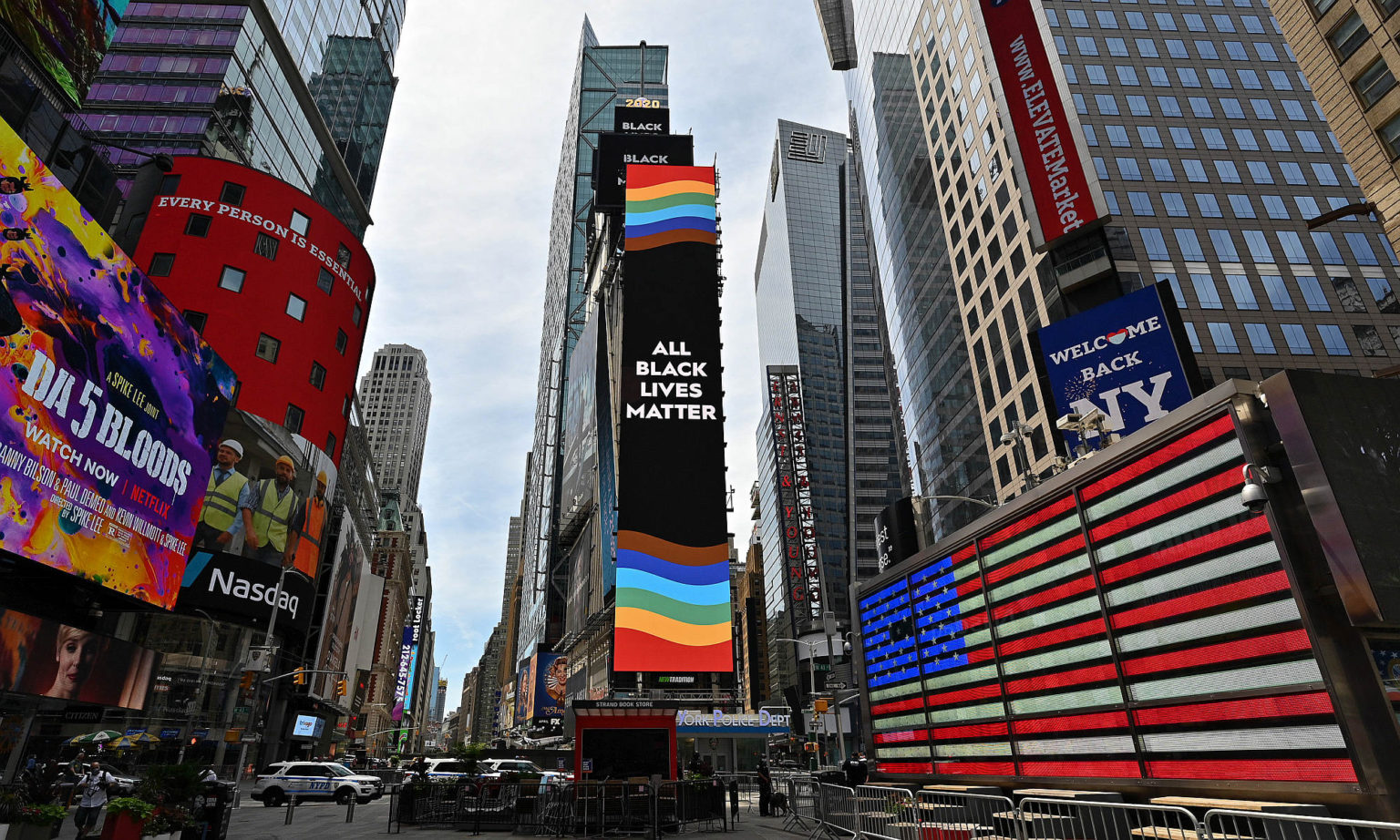
Even though some in the political arena are becoming increasingly aware of woke’s unpopularity, it will take more than a few voices speaking up to loosen woke’s grip. Woke thinking has become the central driving force behind many state and private-sector institutions. The cultural elite – made up of those who produce books, films, art and fashion, report and comment on the news, and run universities – is thoroughly woke. This means that national governments only have limited scope to push back against this elite agenda.
Few self-identify as woke. No political party stands on a self-declared woke manifesto. Yet, over the course of several decades, a particular set of values has become embedded within our institutions, government and businesses. This movement resists a label and has few self-identified advocates. Still, its proponents are easy enough to spot. They insist on purity. They cast out those who might be sympathetic to their cause but are not au fait with the latest woke vocabulary, at the very same time as they refuse to engage in debate. Woke’s advocates are critical of older arguments for equality. And, by focusing on identity, they overlook material concerns and see working-class people as requiring re-education. Woke is intolerant of national pride and is particularly scathing of national heritage and tradition. It is also anti-democratic – woke activists try to impose change from the top down, while denying that woke even exists.
This is why naming and pinning down this movement is so important. While it might occasionally be overused, the word ‘woke’ names one side of the culture war. And having named it, we can identify, expose and challenge it.
Joanna Williams is a spiked columnist and the author of How Woke Won. Order it here.
All pictures by: Getty. Except picture of Hudson Ledbetter, which is in the public domain.
To enquire about republishing spiked’s content, a right to reply or to request a correction, please contact the managing editor, Viv Regan.



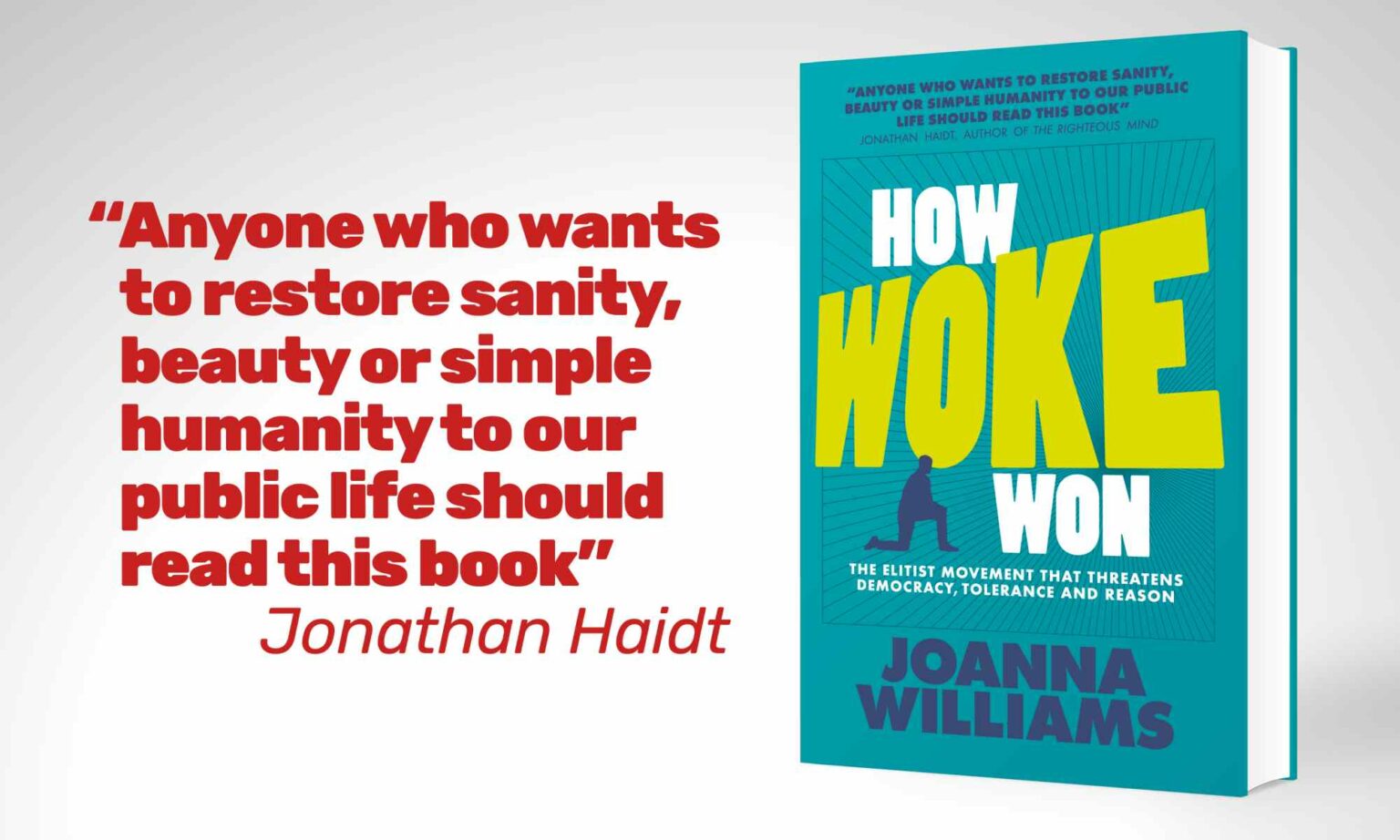
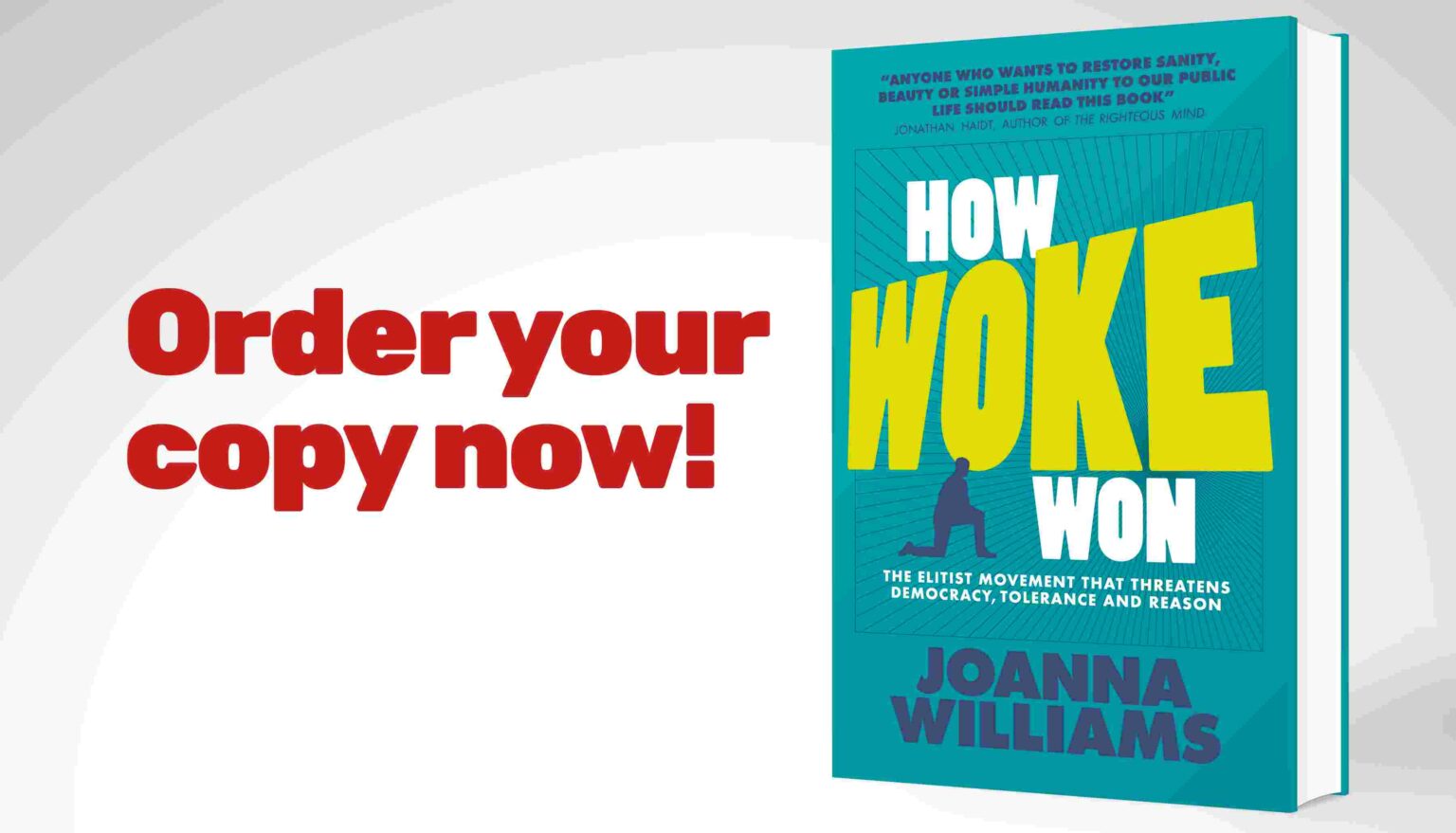


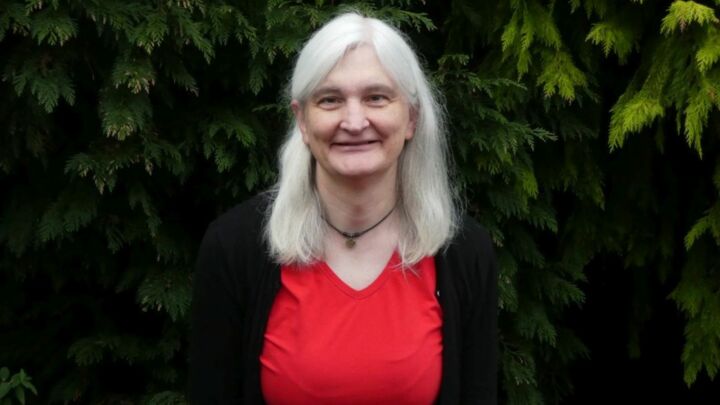
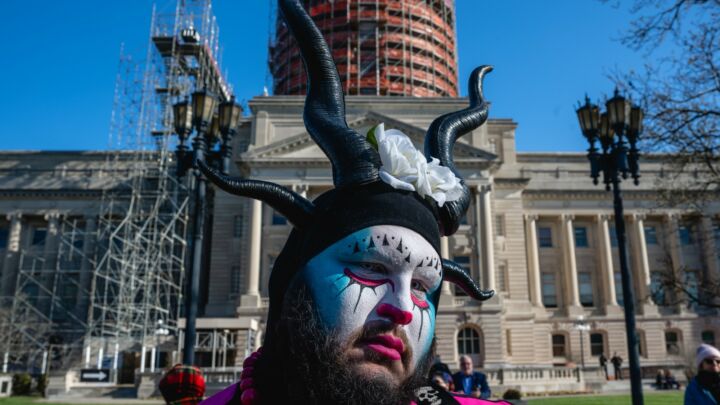

Comments
Want to join the conversation?
Only spiked supporters and patrons, who donate regularly to us, can comment on our articles.